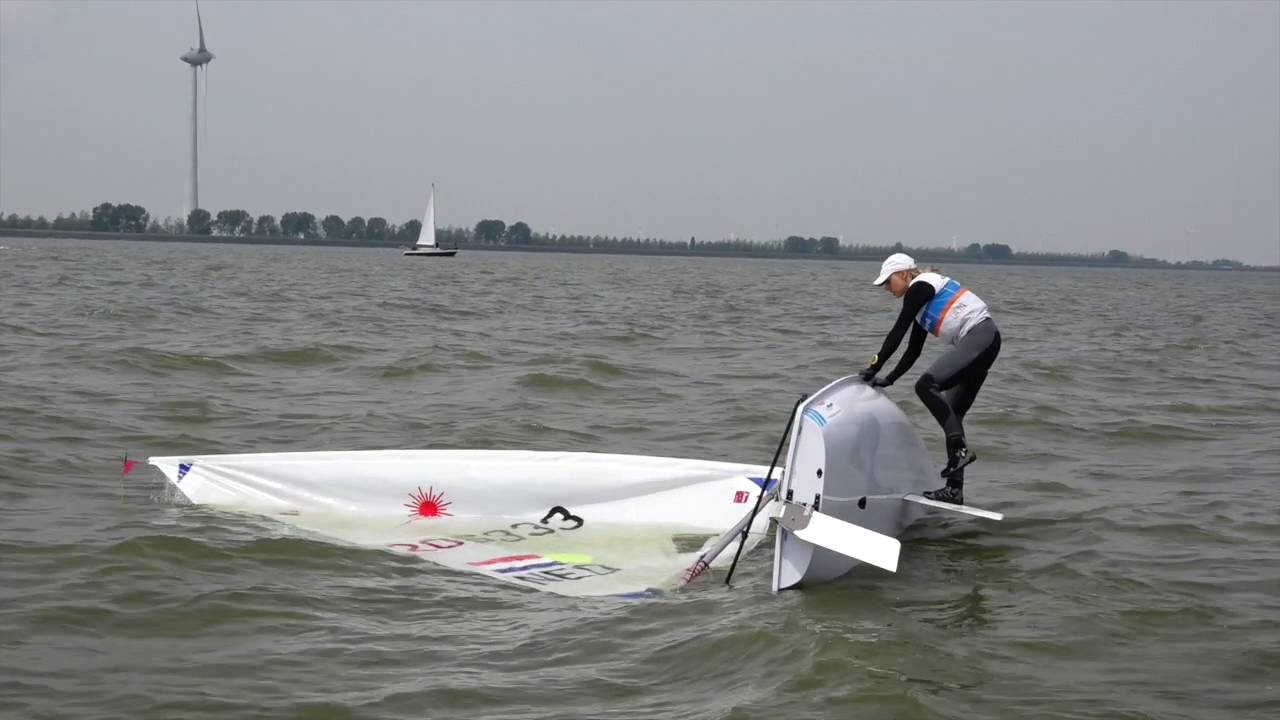How to Right a Capsized Sailboat
Capsize is the term used when a Sailboat is tilted at a 90º angle or turned over in the water. It has something to do with the movement of the crew weight or excess weight concentrated on the wrong side of the boat. It can also be due to too much power in the Sail.
In this section, learn how to avoid capsizing or deal with a small capsized sailing Dinghy:
How to Avoid Capsizing
- Familiarize yourself.
Keep in mind that Capsizing is very common when sailing a small boat. This fact can make you prepared. Know the different situations where Capsizing becomes inevitable. Getting familiar with the causes can help you in avoiding them as you go afloat.
It is wise to know the things you need to do if the boat capsizes. In protected waters with good conditions, practice dealing with a capsized boat. Get familiar with the steps to do to make the boat upright again. Make sure that you wear a Life Jacket. It will be better if you have someone on another boat to give assistance when necessary. - Know your limitations.
Sail within the limits of your skills and ability to respond to situations. Knowing how to make the boat upright when sailing a Dinghy or small boat is very crucial. If you do not know how to deal with a capsized boat, sail on a more stable one. Small Keelboats and other types of Dinghies are more stable and less likely to capsize.
For obvious reasons, do not go afloat if the conditions are not favorable for Dinghy Sailing. - Know how to reef a Dinghy.
A Dinghy becomes easier to handle in strong Winds if it is reefed. Reefing, or reducing the Sail Area, is an important skill to learn. Knowing how to properly adjust the Sail area of a Dinghy while on the water can help you in keeping it upright. - When Sailing Downwind
Place crew weight astern and keep the boom down. - When Sailing Upwind
Place crew weight to windward. Slightly raise the Centerboard or Daggerboard to decrease the Heeling effect. Take control of the speed of the boat. It is more likely to capsize if it heels and slows down.
Knowing the causes of Capsizing will help you in avoiding it. In the event that your boat capsizes, do not get embarrassed. Having a capsized boat is not something to be ashamed of. Many sailors have their own share of experiences in getting their Dinghy capsized. The important thing is that you learn from the experience.
Methods of Righting a Capsized Boat
Dealing with a Capsized boat generally depends on the size of the Sailboat and on what circumstances you are sailing in. Wind and wave conditions at that particular time should be taken into consideration.
Here are some Techniques in Righting a Capsized Boat:
- Righting a Single-Hander
In the event that the boat is about to capsize to leeward and you cannot avoid it:- Release the mainsheet and tiller and climb towards the opposite side.
- Climb over the top gunwale (top edge of the side of the Hull).
Step over the sidedeck to reach the Daggerboard. - Stand on the part of the Daggerboard nearest to the Hull and hold the gunwale.
- Pull the boat upright. Climb back to the boat as soon as it is upright again.
- Scoop Method
The heavier person rights the boat by standing on the part of the Centerboard nearest to the Hull to pull the boat upright. The other person is scooped aboard. His weight will prevent the boat from another Capsizing once it is upright. In this method, release the mainsheet and jib sheets in order for the Mainsail to wave loosely when the boat is upright again. - Walkover Method
As the boat capsizes, you and your crew member should climb over the opposite side of the boat to reach the Centerboard. Climb back into the boat as soon as it is righted. - Traditional Method
Turn the boat in such a way that the Mast is downwind or the bow is pointed into the Wind. The first person should stand on the Centerboard, while the second crew member keeps the boat into the Wind. From the Stern, the first person boards the boat and helps the other crew member onboard. - Righting an Inverted Boat
The buoyancy distributed on the bottom and sides of the Hull makes a lot of Dinghies more at risk to turtle (turn completely upside down). In this situation, the Centerboard will likely to slip back into its case. When this happens, stand on the opposite gunwale and pull on a jib sheet or fixed righting line and lean out. Bring the boat to its horizontal or capsized position. Do the suitable Righting Technique to make the boat upright.
In recovering a Capsized boat, ensure that you and your crew (if you are sailing with another person) are safe at all times. Wear a Life Jacket afloat and remember to stay with or near the boat when it capsizes.
How to Right a Capsized Sailboat – Conclusion
Do not be embarrassed if your boat capsizes. In general, getting wet because your boat capsized is both a learning and fun experience. This is actually a good way to teach you several important skills in boat handling and techniques on how to deal with different situations.
